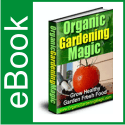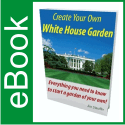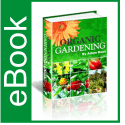How To Build Your Own Raised Veggie Bed
How To Build Your Own Raised Veggie Bed
Article by Jessie Tontine
Creating a raised bed for growing vegetables is surprisingly easy and quick – and filling it with a purpose-designed organic mix from BC Sands means that you know your veggies are getting the best possible start in a fantastic growing medium!Supply list for Raised Veggie Bed – all available from BC Sands:– Six pine sleepers, approx 2400 x 200 x 100 (if using treated pine, line the sides of your veggie bed with corflute or plastic)- Bolts or screws to hold them together- 1m3 BC Sands Organic Garden Mix, Organic Vegetable Mix or topsoil mixed with blood and bone or composted manure- Sugar cane mulch- Spade- Fork- Rake- SawChoose where you would like your veggie bed to be. You will need a flat area with good sun and if you are planning on using an existing garden bed, please weed it first! Use a fork to loosen the soil, so that if your veggies send roots deeper than your organic mix there is some friendly earth waiting for them.If you plan on setting up your bed anywhere other than on a garden bed, then lay down a sheet of weed mat, slightly wider than the area that will be enclosed by your sleepers, which will form the ‘walls’ of your garden bed. Please note that if you are using this technique your garden bed will not be suitable for veggies with deep roots or root veggies, such as carrots and potatoes.Saw two of your sleepers in half – these four shorter pieces will form the sides of the box. Use the longer sleepers for the front and back.Lay four sleepers together in a rectangular shape and bolt them together at the corners. Lay the other four sleepers on top and bolt them together at the corners, then to ensure your enclosure is robust, bolt the upper and lower sleepers together.Fill your enclosure with your chosen soil, to a depth of at least 300mm. One of the great advantages of the raised garden bed is the complete control that you have over the growing medium – if your regular soil is sandy, stony or solid clay, it doesn’t matter. You can fill your garden box with exactly the right soil for your plants!You can choose whether to sow seeds or plant seedlings. Vegetables like zucchini, beans and lettuce are ideal for raised garden beds, as are herbs. Add colour and visual interest by planting a row of annuals right at the front of the bed. Strong smelling herbs like basil and garlic confuse flying pests and help protect your veggies, and tagetes marigolds are great for colour and will also control nematodes and distract white fly. Remember to water well, both before and after planting!If you sow seedlings, or once the seeds have sprouted and grown to about 5cm, strew sugar cane mulch around your seedlings. This will keep weeds down and will also help the soil to retain moisture – this is particularly important in a raised bed as they tend to drain faster than a regular garden bed.- Do wait for spring to start before planting – cold snaps are fatal to young veggie plants. If you prepare your garden bed ahead of spring suns, place a sheet of clear plastic over it, weighed down with bricks – this will warm the earth before you plant.- Kids love these raised garden beds – they’re so compact and manageable that even young kids can water and weed them (once you’ve pointed out the difference between seedlings and weeds, of course!)- If you find bending difficult, it is possible to purchase purpose-designed garden beds with legs – veggies without the pain!
About the Author
Natural landscape artist, gardener and Do-it-yourself-er. Enjoys writing about anything at all backyard and landscaping relevant. building supplies
Use and distribution of this article is subject to our Publisher Guidelines
whereby the original author’s information and copyright must be included.

 July 18, 2012
July 18, 2012 







